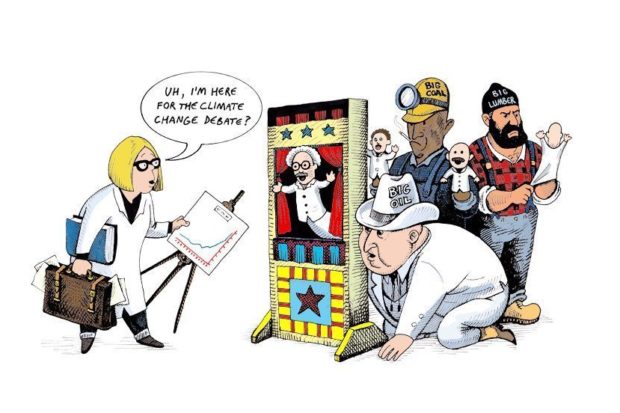
By George B. Kauffman
Climate change is occurring right now. Glaciers are retreating, and sea ice is thinning. Exponential growth of fossil fuel use has overwhelmed natural climate systems, tipping our planet into the “HyperAnthropocene,” an era in which feedback loops lead to rapid, radical climate change. This will flood many of the world’s coastline cities by the end of the century, according to former NASA climatologist James Hansen (Hansen, J. et al. Earth’s energy imbalance and implications. Atmos. Chem. Phys 2011, 11,13421-13449. http://www.atmos-chem-phys.net/11/13421/2011/acp-11-13421-2011.pdf).
More recently, Geoscientist Robert DeConto and paleoclimatologist David Pollard, who have spent several decades testing and refining computer models, agreed with Hansen’s conclusions (DeConto, R. M.; Pollard, D. Contribution of Antarctica to past and future sea-level rise.Nature March 31, 2016, 531, 591-597. http://www.nature.com/nature/journal/v531/n7596/full/nature17145.html): “All climatic records and models of the future agree: If we sail past a 2 degree C temperature rise, the question isn’t whether the ice sheets dissolve but when.” A single lifetime is all that remains before catastrophic effects set in.
In July geographer Richard Heede received a subpoena from Representative Lamar Smith (R-TX), Chairman of the House of Representatives Committee on Science, Space, and Technology. Smith, a climate change doubter (Why is he even on the committee, let alone being its Chairman?), became concerned when the Attorneys General of several states launched investigations into whether ExxonMobil had committed fraud by sewing doubts about climate change even while its own scientists knew that it was taking place.
Smith suspected a conspiracy between the Attorneys General and environmental advocates and wanted to see all communications among them. His targets predictably included advocacy organizations such as Greenpeace, 350.org, and the Union of Concerned Scientists (of which I’m a member).
Contrary to Reagan administration claims, Heede puts much of the responsibility for climate change on just 90 companies, but others say that’s a cop-out. David Victor, a political scientist, energy policy specialist, and coauthor of the 2015 Intergovernmental Panel on Climate Change (IPCC) criticized Heede’s work as naïve and oversimplified: “Frankly, we’re all the users and therefore we’re all guilty.”
Opponents of policies limiting anthropogenic climate change have offered a changing set of arguments denying or questioning its existence, rate of progress, the risks that it presents, the integrity of climate scientists, and the value of mitigation efforts. Similar arguments characterized environmental risk debates concerning arsenical insecticides in the late 1800s, phosphates in detergents during the 1960s, and the pesticide dichlorodiphenyltrichloroethane (DDT) in the 1960s and 1970s (Do you remember Rachel Carson’s book, Silent Spring?).
Typically, defenders of business as usual first question the scientific evidence that risks actually exist, then question the magnitudes of the risks, and finally assert that reducing them has more costs than benefits. A parallel rhetorical shift away from outright skepticism (“neoskepticism”) is a new incarnation of opposition to major efforts to limit anthropogenic climate control. This shift heightens the need for science to inform decision making under uncertainty and to improve communication and education.
Mainstream climate scientists are well aware of uncertainty in climate projections. However, neoskeptics’ citing it to justify policy inaction marks a shift in focus in climate debates from anthropogenic climate change to its import and to response options.
My article is based on Clay Farris Naff’s article, Humanity’s Last Stand: How we can stop climate change before it kills us. The Humanist July August 2016, 76(4), 12-17.
*****
George B. Kauffman, Ph.D., chemistry professor emeritus at California State University, Fresno and Guggenheim Fellow, is recipient of the American Chemical Society’s George C. Pimentel Award in Chemical Education, Helen M. Free Award for Public Outreach, and Award for Research at an Undergraduate Institution, and numerous domestic and international honors. In 2002 and 2011, he was appointed a Fellow of the American Association for the Advancement of Science and the American Chemical Society, respectively.
